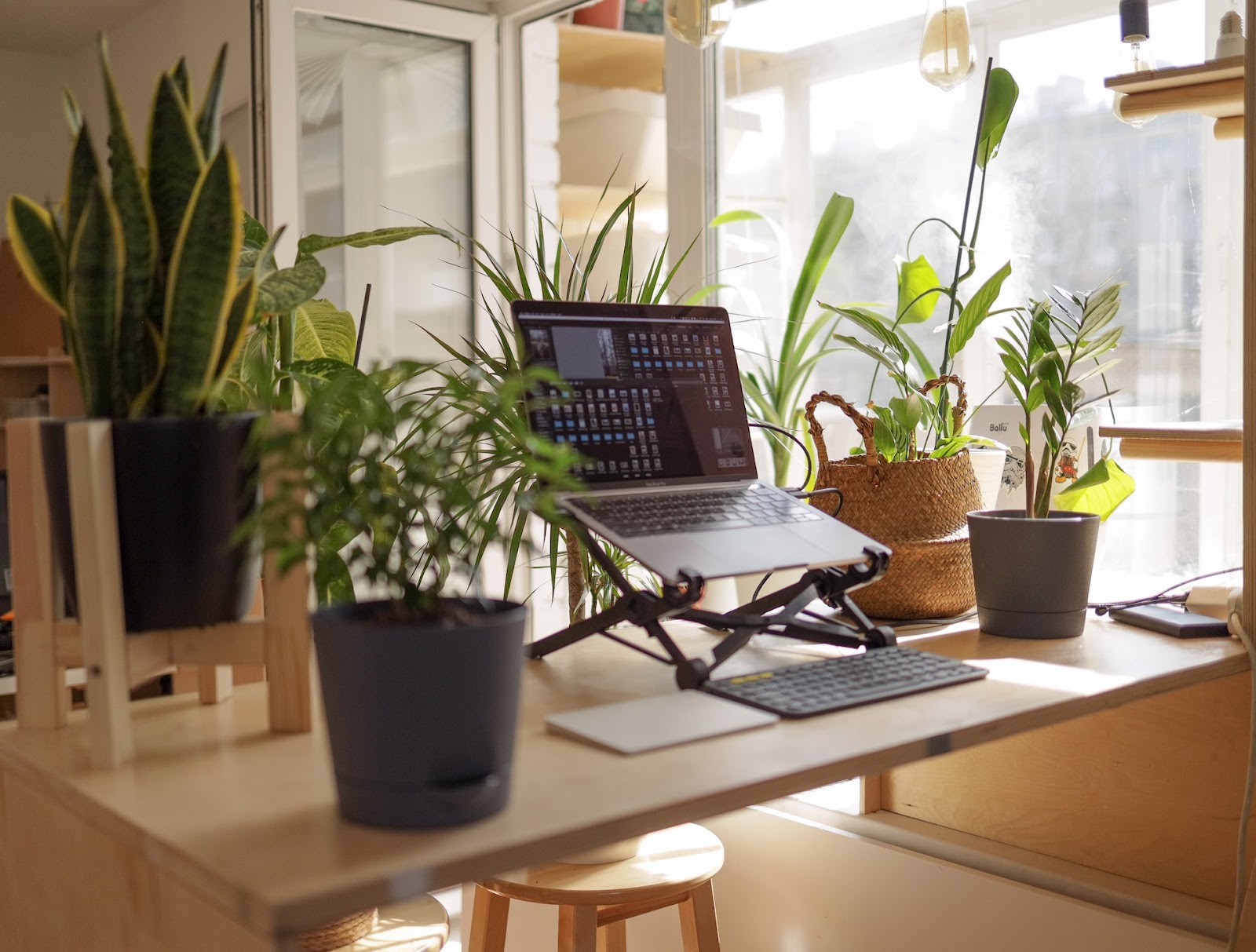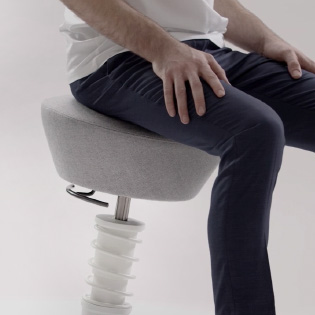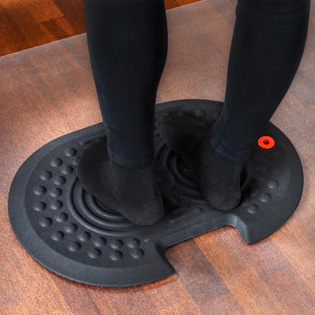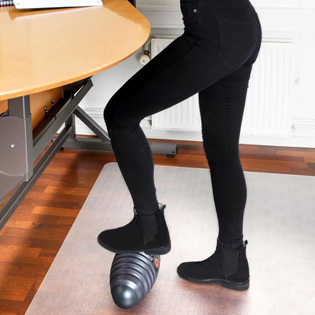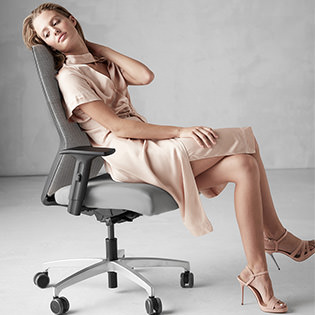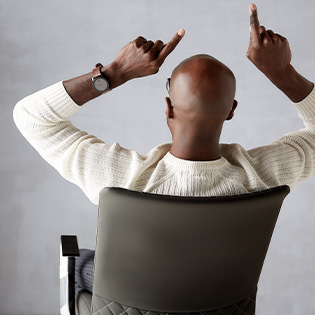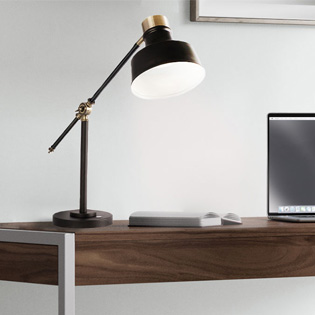Safety Considerations For Remote Workers

In this article:
- The most common work-from-home injuries
- Create an optimal work setup
- The right workspace
- Essentials for your workspace
- Organize your home office
- Safety considerations
- Tips for productivity and work-life balance
In 2022, more businesses are embracing work-from-home policies, which allow them to look for talent across the country and benefit from business cost savings. The statistics show that the trend is not slowing down any time soon: Remote work is here to stay, and remote opportunities will grow in the next few years.
Remote work has many perks for employees: increased productivity, less stress, and more satisfaction. According to the American Opportunity Survey, more than half of adults in the United States do some form of remote work as of 2022. The survey also found that when people have the chance to work flexibly, 87% of them take it.
But remote work also comes with some challenges as it can affect employees’ mental and emotional health, which affects productivity. Only 33% of people have a dedicated room for working from home, according to the 2021 Journal of Occupational Environmental Medicine report, and half of those people share that space with another person all day.
This article will discuss how you can optimize your workstation for remote work and maintain a positive work environment that will enhance your productivity and improve your well-being.
The most common work-from-home injuries
The most common injuries for remote workers are the back, shoulders, and hands. Many of these injuries occur because of improper workstation setup. For example, a table or chair not designed for work and doesn’t support your weight or height can cause back pain over time.
If a gaming or ergonomic chair is too high, it can affect the posture, and if it’s too low, you might get back pain, as you would need to lean forward to reach a keyboard.
Some remote workers also report pressure due to the constant expectation to be available outside work hours and limited connection with their co-workers.
Create an optimal work setup
Shared space vs. private space
When creating your remote workspace, you need to figure out whether you want a designated workroom or if you are comfortable sharing space with others. While having a separate work room can help you stay organized and focused, staying in the same room for hours alone can also make you feel lonely.
Changing your working environment from time to time is a good idea. You can benefit from co-working spaces in many major cities as a remote worker. Doing so can help you to mingle with other remote workers and get a break from the familiar environment.
The right workspace
Working in a shared space
If you prefer to share space with other people, you can work from home or choose a co-working space. You can also do a combination of thereof, like many remote workers who go to a co-working place once or twice a week but keep their permanent workstation at home.
There are various hybrid options that employees can choose from. The most common ones are where employees can choose which days they work from the office and which days they work from home. The other option is employers assigning the number of days or times employees can work from home vs. in the office.
Besides setting up your home office, a hybrid or WFH policy is also in place to clarify the work environment for anyone.
There are several benefits to the hybrid option.
- Cost savings
- Employees don’t have to commute all working days
- Employers can save on office space
- Increased satisfaction and productivity of employees
- Flexibility
There are also disadvantages to the hybrid option that we’ll mention.
- Managing teams is difficult.
- Lack of routine as employees switch between the office and home.
- Potential security issues, especially when working with sensitive information.
Employees can also decide to work certain days from a co-working office. In a co-working office, different freelancers or companies share a shared space.
The benefit of a co-working space is that other working-from-home employees and freelancers can network. It is also a good idea when you don’t have the basic home office set-up or room at home.
However, the lack of privacy might be an issue for some when choosing a co-working space. It might also be crowded and noisy, making concentrating difficult. Lastly, high membership costs could make it a less attractive option. The average price for a coworking membership in the US of America is between $260 and $430 on a monthly base.
Other essential considerations are
- Location. Make sure the coworking space is not too far from your home.
- Rent terms. Always good to know about their terms and conditions.
- Opening hours. Rent somewhere that matches your working hours. Are you someone that often needs to stay late to finish projects? Then a coworking space that closes early won’t be a good option.
- Benefits and extras. Some places provide coffee, printing services, etc. Decide if that’s important to you.
Before opting for a membership, check if the co-working space meets your requirements. Pay attention to the other freelancers or employees there. If you’re someone that would like to network, make sure that the others are within your industry.
Working from home
While shared space is excellent for reducing loneliness and socializing with fellow remote workers, it doesn’t offer a lot of control over working conditions. Like a regular office, a co-working space can have too much A/C, inadequate lighting, or little space.
When deciding to work from home, there are various options as well. You can opt for a shared room (e.g., living room), your own home office, or even your bedroom.
If you’re choosing a shared room within your home, make sure that you have a good internet connection, especially if there are multiple people in the household using it. As a shared room might be the busiest room in the house, make arrangements not to get distracted by the TV or others walking around. It is an excellent option if you don’t want to feel lonely or if you have little space in other rooms.
Alternatively, you can work from your bedroom. It offers more privacy than a shared room. However, sharing your workspace and sleeping space can create sleeping issues. To make working from your bedroom a success, set clear boundaries. The bed should be for sleeping and use a desk for working. Ideally, your desk should be as far from the bed as possible.
Lastly, if you have an extra room in the house, it’s not a bad idea to turn this into a home office. See the checklist for your home office essentials. A dedicated office within your home is ideal as it lacks distractions, and you can focus on your work.
Essentials for your workspace
Home office setup
When setting up your home office, you need to get furniture like desks, chairs, and cabinets. You will also need office supplies and electronics like a laptop, headset, and other equipment you need for your job.
Internet connection
A good internet connection is imperative for remote workers. According to the Global Nomad Guide, if you work from home most of the time, you need an Internet speed of 100 to 200 Mbps and above. This speed allows you to do meetings via Zoom and Microsoft Teams, stream videos, and browse information online.
Additionally, the Federal Communications Commission (FCC), a government agency that regulates communications in the U.S.) suggests a minimum of 5–25 Mbps for any Telecommuting job. These are the minimum speed recommendations. However, they do not consider all the devices or how much bandwidth they use.
Lighting
Working from home means you probably spend extended hours on your computer, which can strain your eyes. Proper lighting makes a more productive workspace, helps to reduce eye strain, and increases your energy.
Natural vs. artificial lighting
Your workspace should have a good combination of natural and artificial light. While you should avoid working under direct lights, you can look for ways to create ambient lighting, like lampshades and small light fixtures that keep your workstation illuminated without producing direct glare. Daylight LED bulbs can create maximum brightness for your workspace.
Where to put lighting
When setting up your workspace, always consider the source of light. Your light source should never be behind you, as it will create a glare on your screen. Create enough light with little to no shadows cast by any light fixtures. One of the best ways to do it is to use an adjustable desk lamp that can produce a defined light source and support your tasks.
You should also set up a proper amount of lighting for video conferencing with the right amount of light around your face and torso without the harsh direct light.
Organize your home office
Declutter
Keep your workstation clutter-free. A cluttered space can negatively affect your productivity and cause you to lose documents and files and forget important tasks.
To keep things organized, consider purchasing office storage cabinets and units where you can put essential items and label them. Keep your power cords and electrical cables away from tangling by using binder clips and holders to avoid a knotty mess.
Get plants
Adding a couple of plants is a great way to spruce up your working area. Plants can boost your mood, reduce stress and create a more cheerful environment. According to the University of Exeter research,” green” offices with plants make employees happier and more productive than offices without greenery.
Add colors
Similar to lighting, the color of your work environment can significantly affect your productivity and mood. Color can also impact your stress levels and concentration, among other things. You can choose from various colors and tones. However, it’s essential to know the psychology of each color when creating your interior design.
Safety considerations
Potential hazards in the workspace
When setting up your workspace, consider the potential hazards associated with electrical installations. Since you spend most of your work day in front of your computer, it’s paramount to ensure that your electrical system works properly.
While you can do a basic check, consider hiring a home inspector who can thoroughly examine your home’s electrical system, including wiring, GFCI outlets, and the main electrical panel. The inspector will check outlets, fixtures, and appliances to see if they work properly and are wired correctly. If the report outlines any issues, consider hiring a contractor who can fix them.
To stay on the safe side, always keep essential safety tools handy, like a first-aid kit, smoke alarms, and fire extinguishers that can help you in an emergency.
Other safety tips
When working remotely, be aware of your cyber security. Following IT security basics like two-factor authentication, password encryption, and anti-virus programs can help you to stay safe while working remotely. In addition, always be wary of random links and emails from recipients you don’t recognize.
To keep your vision from deteriorating, consider purchasing screen protectors or blue glasses that can help you to minimize the amount of blue light that enters your cornea – the transparent part of your eye that allows the light to enter the morning of your eyes.
Tips for productivity and work-life balance
Life-work balance can feel a bit blurry when you work from home. It’s essential to manage your life, so that remote work doesn’t consume your after-hours, and you can still enjoy your free time without stressing about answering phone calls and emails.
Use specific tactics
While getting work done promptly is essential, your health always comes first. Remote work provides a flexible environment and helps to save money on commuting.
To avoid burnout and increase your productivity, you can use specific tactics.
Do your work in batches and take frequent breaks. Stay hydrated, and don’t forget to stretch so your body doesn’t feel stiff by the end of the working day. Pacing yourself is a key to accomplishing your goals and staying on task when you work remotely.
Socialize
Working from home can make you feel lonely and isolated. If you spend your day in front of the computer, socialize outside work or take advantage of co-working spaces.
Don’t eat lunch at your desk
Eating at your desk is not uncommon, and that goes not only for remote workers. When you have a lot of deadlines and projects, eating lunch at your desk can be very tempting. But there are many reasons why you shouldn’t do it.
According to the Washington Post, eating lunch at your desk means you stay in your seat longer and move less, making you less physically active and more prone to getting sick.
Sitting for hours can increase your risk of heart disease and lead to high blood pressure and high cholesterol levels.
Go for a walk
Taking quick walks is not only a great way to get some exercise, but it can also help boost your productivity and stay creative. When you remain seated for a prolonged time, it’s easy to feel strained and tired. Walking has many health benefits, like improving your sleep and blood pressure and keeping you energized.
Shower and dress
Although working from home invites a more relaxed dress code, you should always make a point to dress neat and pay attention to your appearance. Not only will you look more professional during your online calls, but you will also feel better about yourself.
Follow the 20-20-20 rule
Try to follow the 20-20-20 rule. Set your timer for every 20 minutes, and look away from your computer screen when it goes off. Focus on an object at least 20 feet away and do it for 20 seconds. Doing it will help your eyes to get some exercise and avoid eye strain.
Remote work has many benefits, but it also comes with some caveats. As a remote worker, you can spend many hours online. Sometimes, the line between your personal and professional life can blur, and you can start feeling more pressure to stay online or respond to messages outside your working hours.
Keeping your home office organized, taking frequent breaks, exercising, and socializing outside work hours is an excellent way to avoid burnout and maintain a good life-work balance.
Written by: Ismirelda Frost
